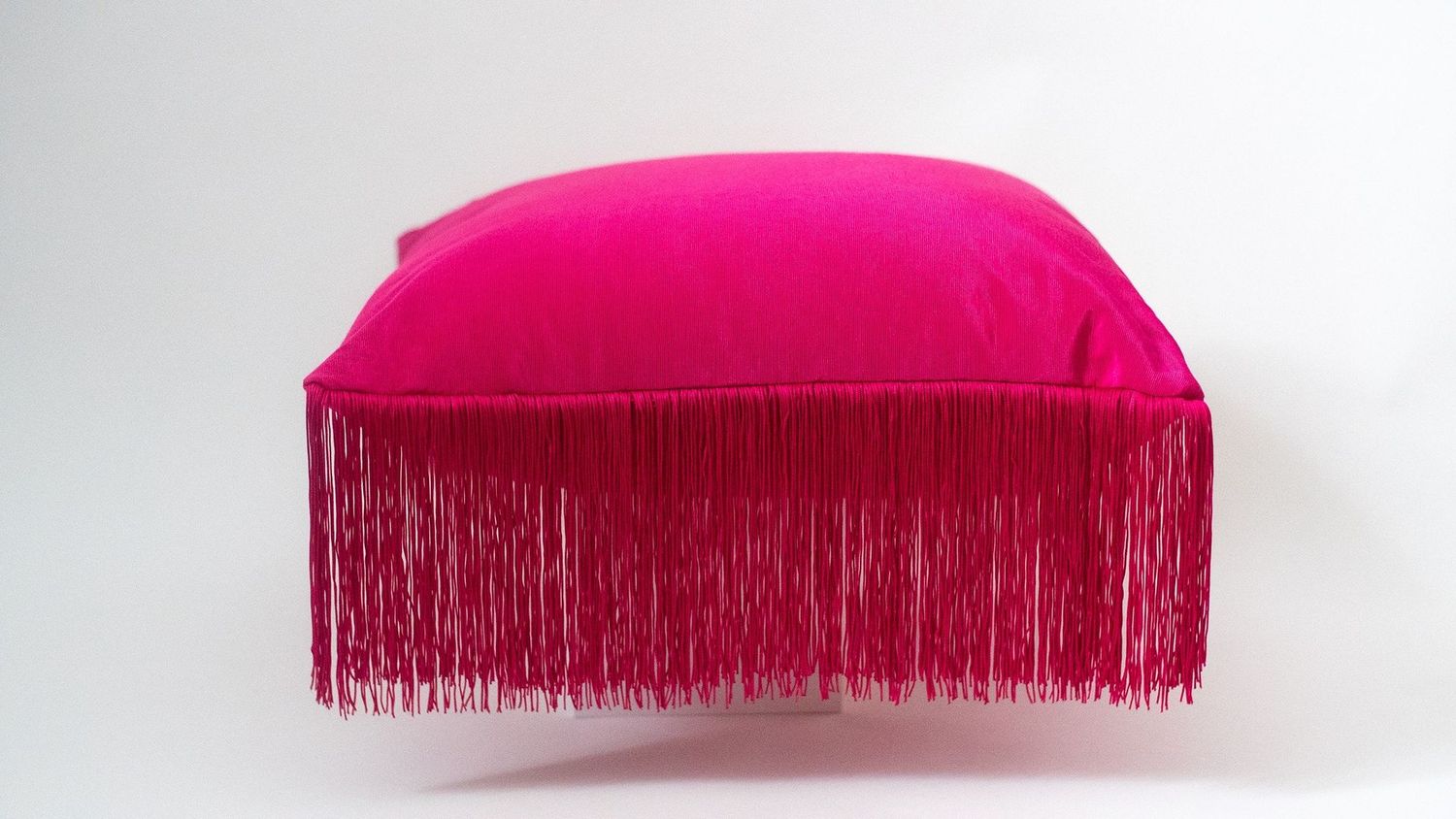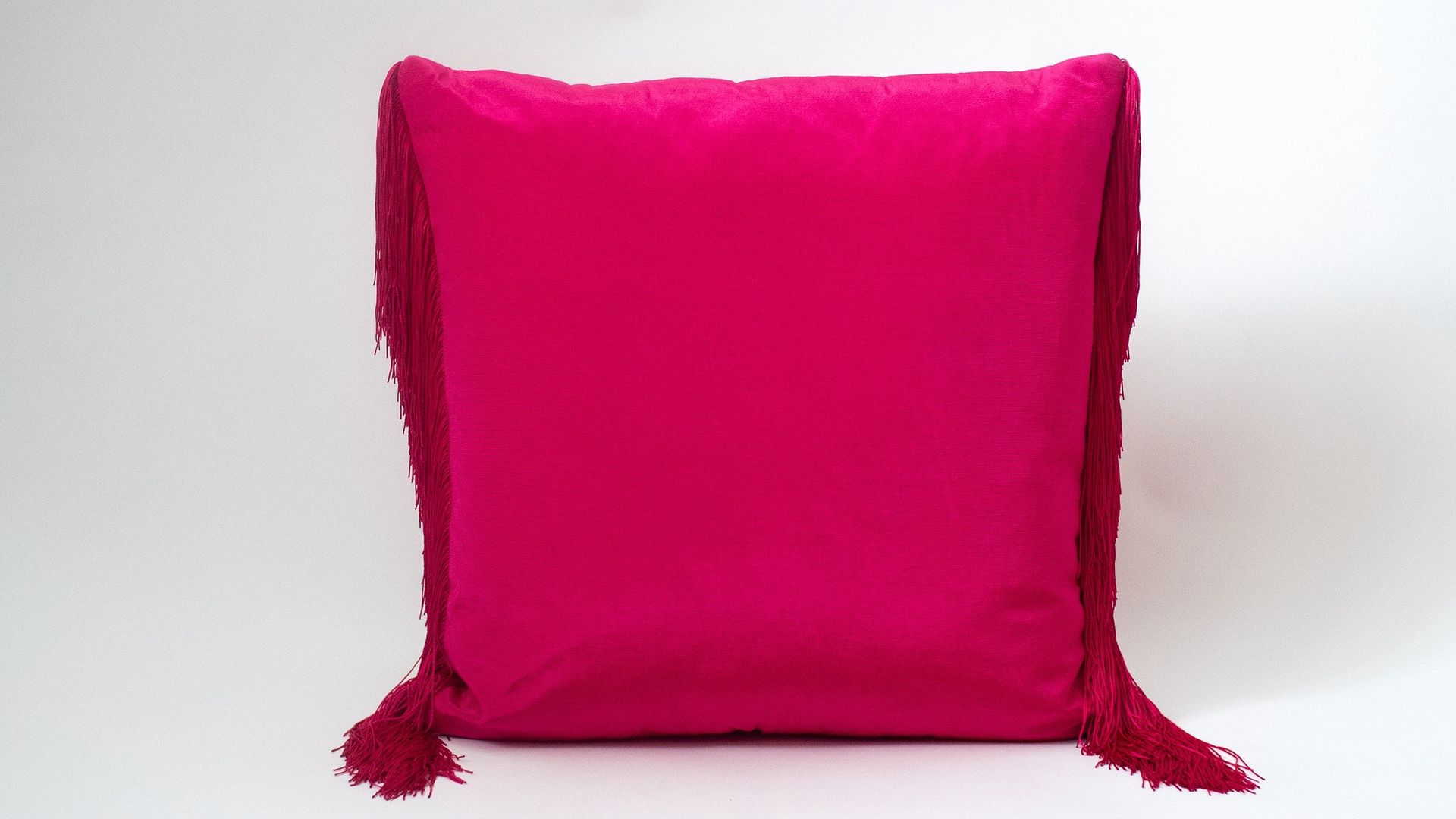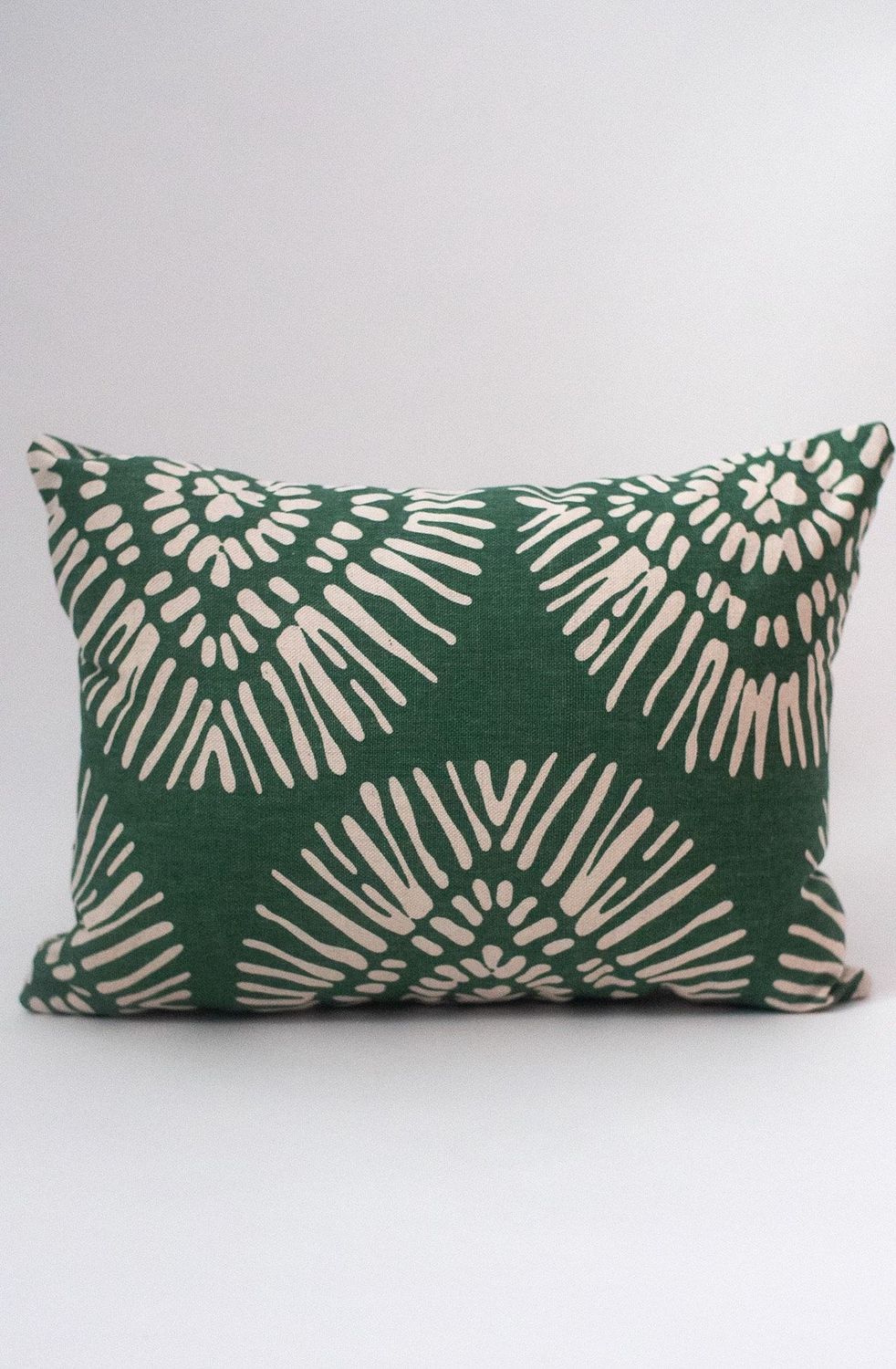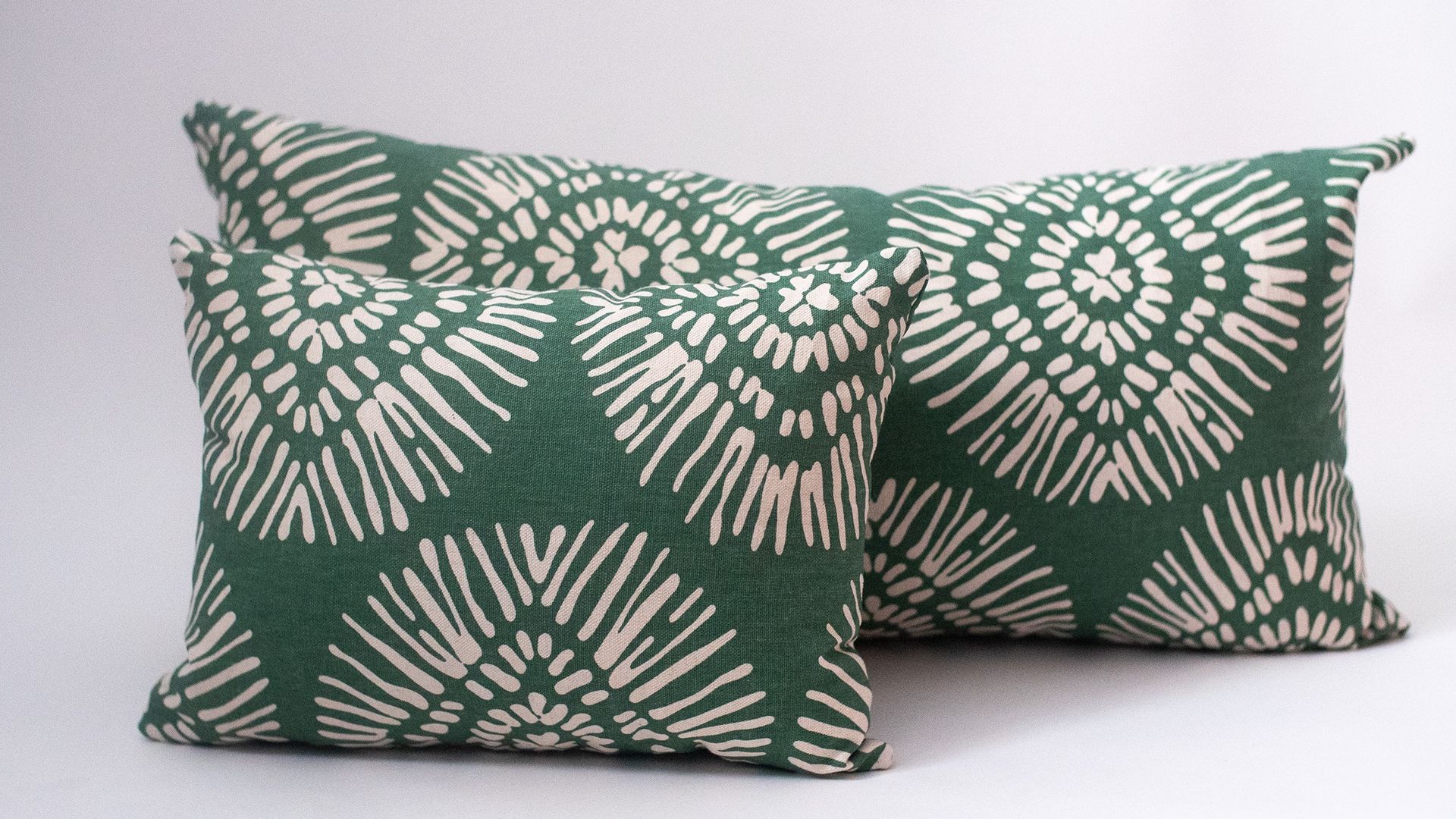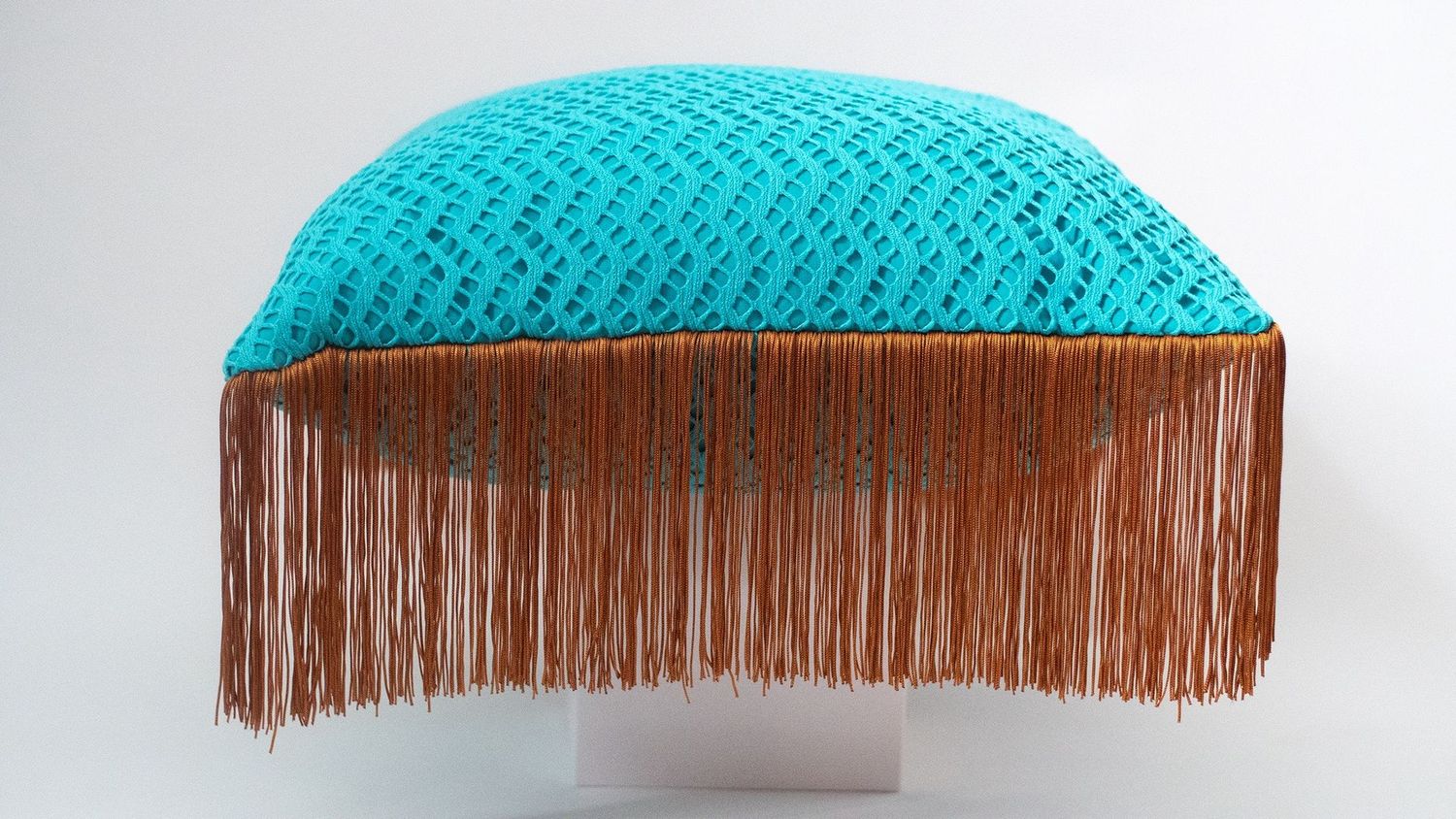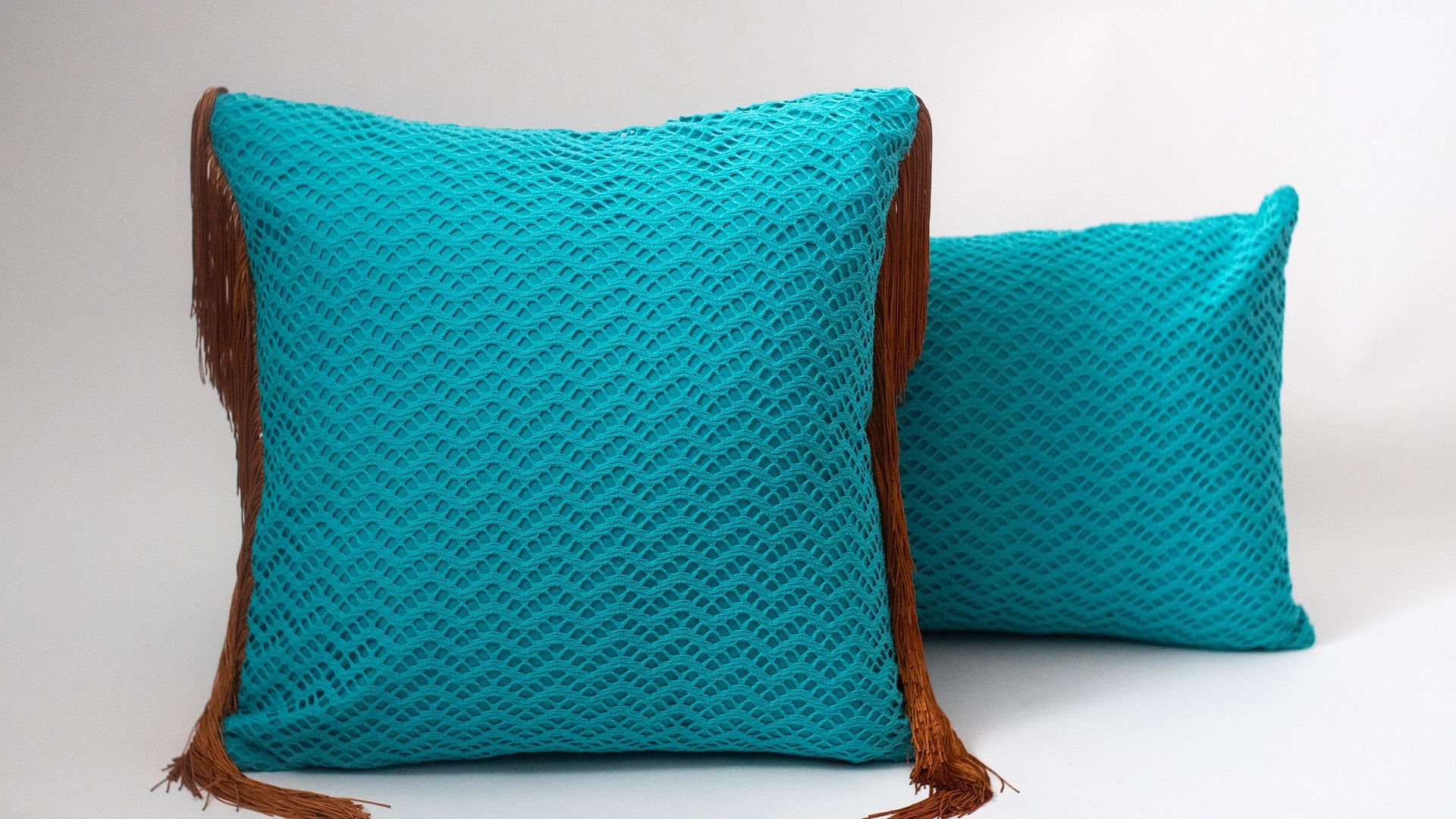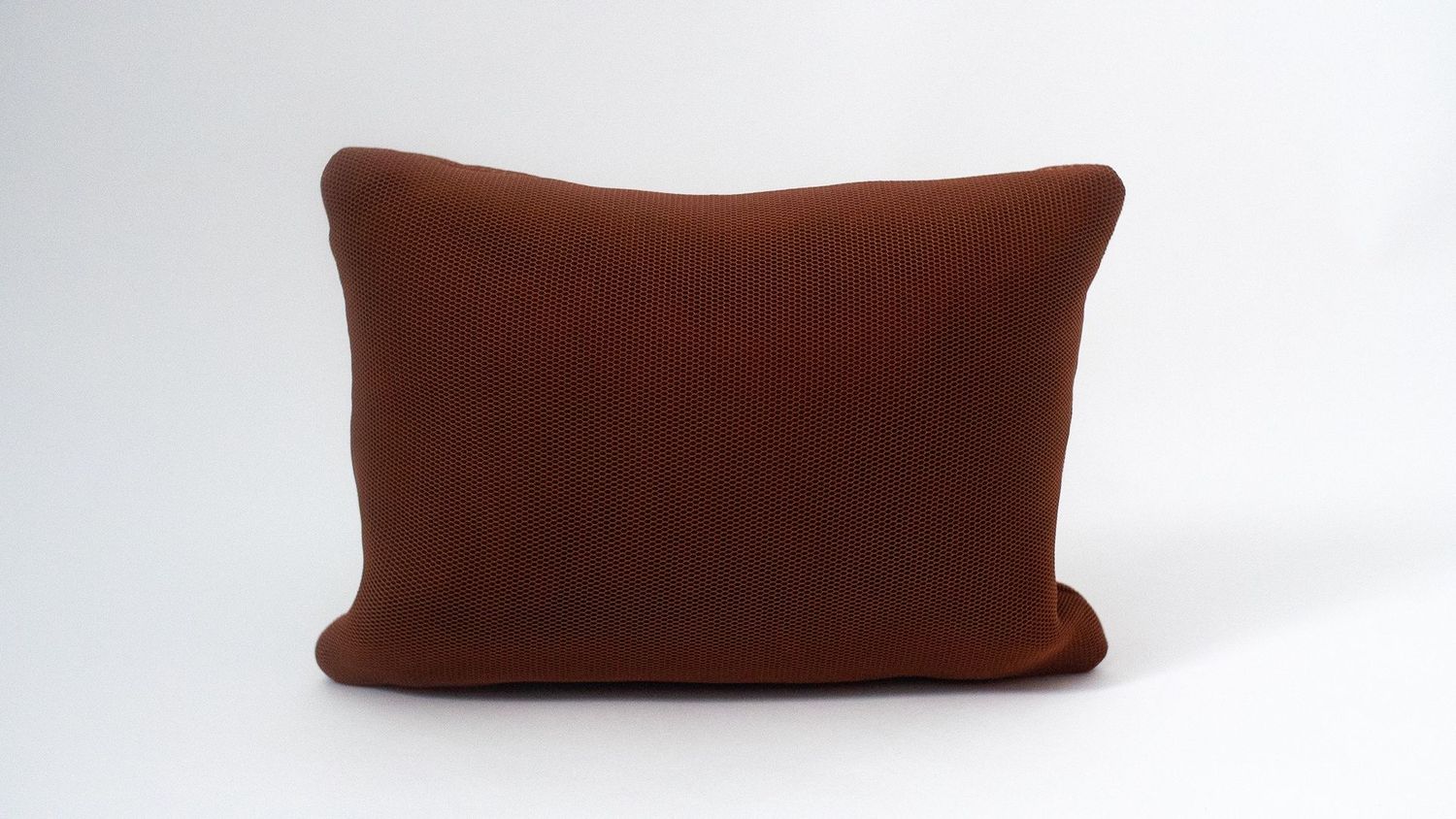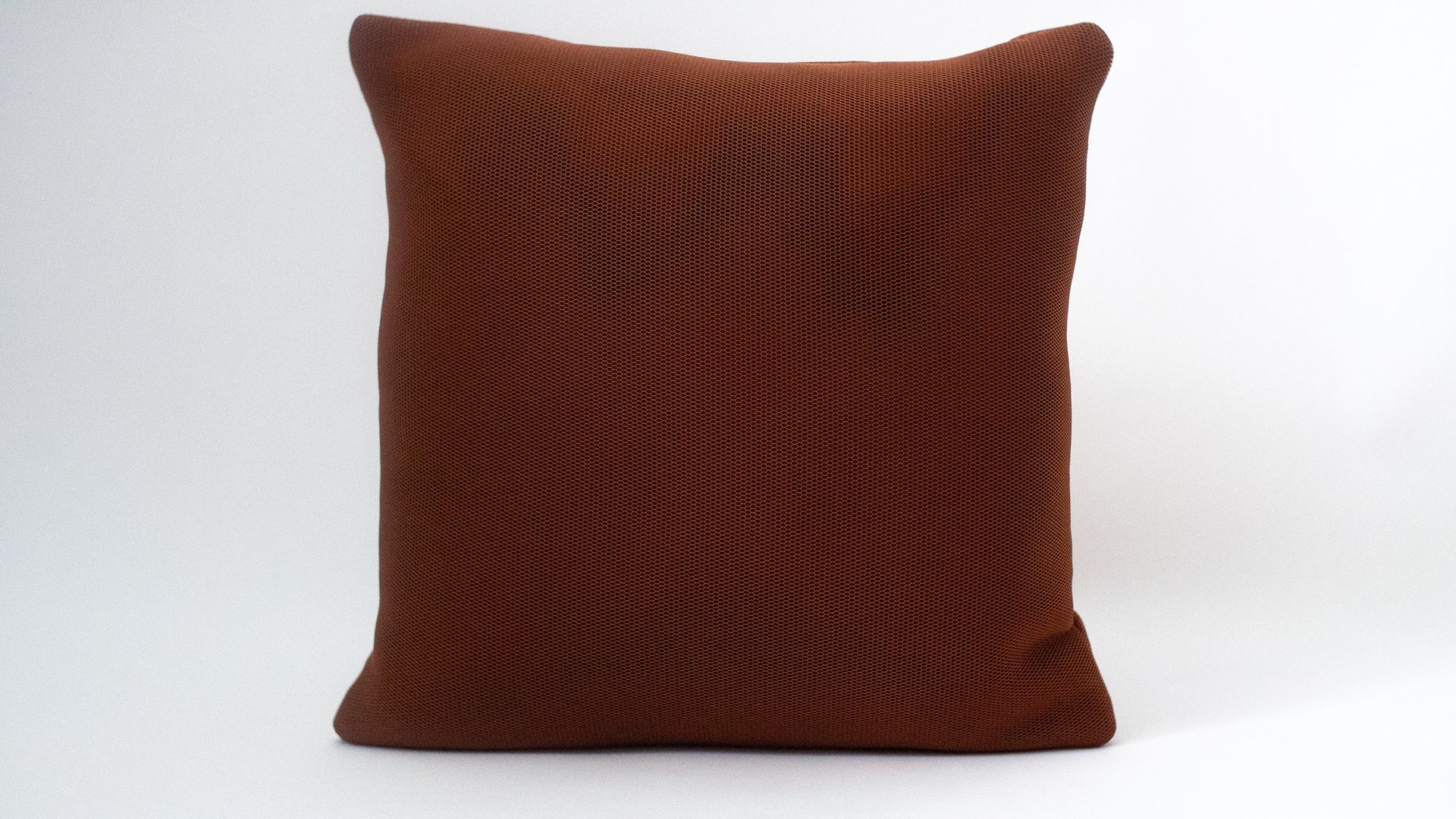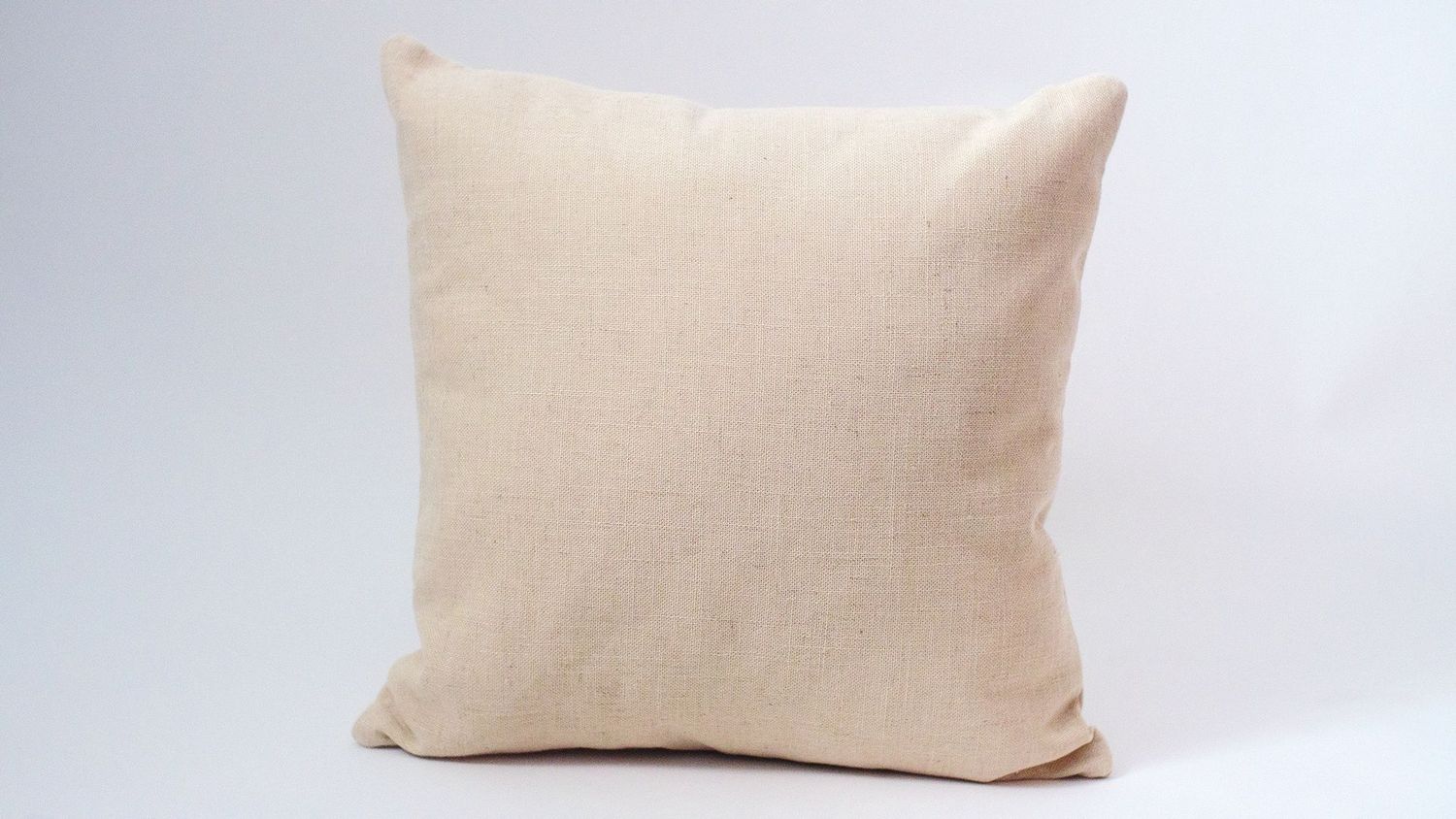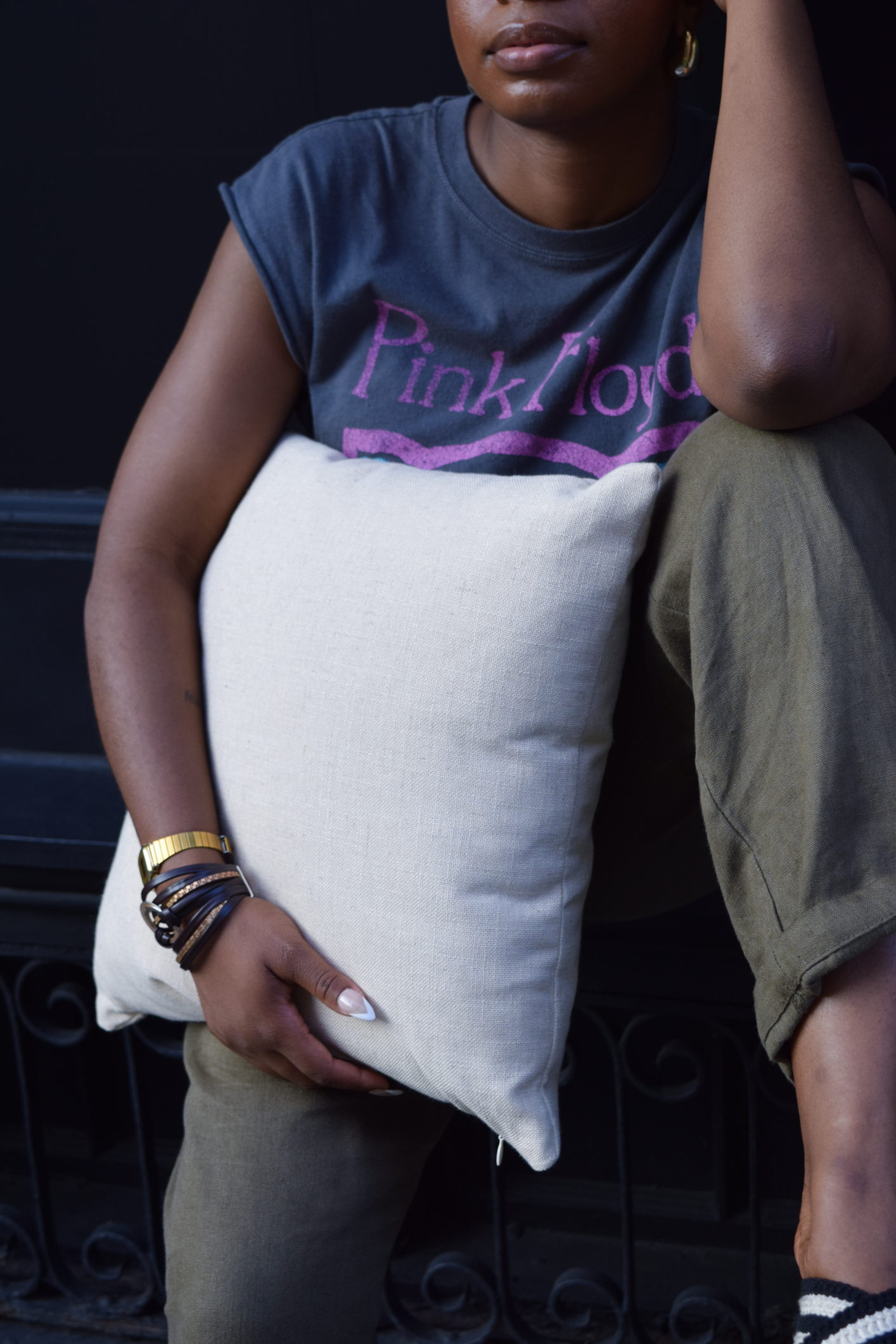City Chic
Shop the Collection
Each pillow in our collection is handcrafted with high-quality materials, ensuring durability and comfort. Whether you're looking to add a touch of luxury to your living room or bedroom, our "City Chic" pillows are sure to make a statement.
Shop our collection today and bring a touch of New York City style to your home. Make your space truly unique with our vibrant decorative pillows that will leave your guests in awe. Upgrade your home decor with our "City Chic" collection and create a space that reflects your individuality and taste.
These handmade pillows are of exceptional quality and lovely detail. I absolutely love the texture and softness of the velvet fabric, the color is Beautiful , and the fringes add the Perfect touch! It comes with the perfect amount of cushion. I love my Rockstar Glam pillow! Thank you!
Bethany
Satisfied Customer
I love the pillows I purchased. They are exactly as pictured and even better in person. I absolutely love the fringes too! they add some playfulness to them that make them unique. Can't wait to see your store grow!
Irene
Satisfied Customer
FAbric Care
Find your product below for wash and care instructions.
Fifth Avenue Fuscia
SATIN
Hand wash: Satin fabric in cold water with a gentle detergent. Avoid using hot water or harsh chemicals that can damage the fabric. Opt for a mild detergent such as All Free and Clear or an eco-friendly plant-based detergent to ensure gentle yet effective cleaning.
Air dry: After washing, air dry satin items by laying them flat on a clean towel. Avoid wringing or twisting the fabric to prevent wrinkles and damage.
Iron on low heat: If ironing is necessary, use a low heat setting and iron on the reverse side of the fabric to avoid damaging the sheen and texture of the satin.
Store carefully: Store satin items in a cool, dry place away from direct sunlight to prevent fading and discoloration. Avoid hanging satin garments on wire hangers, as they can leave marks on the fabric. Instead, use padded hangers to maintain the shape of the items.
FRINGE TRIMMING
Spot clean: Fringe trimming should be spot cleaned with a gentle detergent and cold water to remove stains. Avoid rubbing or scrubbing the fringe vigorously, as this can cause tangling and damage.Opt for a mild detergent such as All Free and Clear or an eco-friendly plant-based detergent to ensure gentle yet effective cleaning.
Air dry: After spot cleaning, air dry the fringe by gently combing through it with your fingers to separate the strands and maintain its appearance.
Avoid heat: Do not expose the fringe trimming to high heat sources, such as a dryer or iron, as this can cause the strands to melt or shrink. Air drying is the best method for preserving the integrity of the fringe.
Store carefully: When storing items with fringe trimming, hang them in a way that allows the fringe to hang freely and avoid crushing or tangling. Covering the fringe with tissue paper or fabric can help protect it from dust and damage.
Greenwich Sunburst
Dust regularly: Use a soft-bristled brush or a lint-free cloth to gently dust off the surface of the canvas print fabric. Regular dusting helps prevent dirt and debris from settling into the fabric.
Spot clean: For small stains or spills, spot clean the affected area with a mild detergent and water. Gently dab the stain with a clean cloth, being careful not to rub or scrub too vigorously, as this can damage the print. Opt for a mild detergent such as All Free and Clear or an eco-friendly plant-based detergent to ensure gentle yet effective cleaning.
Avoid harsh chemicals: Do not use bleach, harsh chemicals, or abrasive cleaners on canvas print fabric, as they can damage the colors and texture of the print. Stick to gentle cleaning solutions to preserve the quality of the fabric.
Avoid direct sunlight: To prevent fading and discoloration of the print, avoid hanging or displaying canvas print fabric in direct sunlight. UV rays can cause the colors to fade over time, so it's best to place the fabric in a shaded area.
Handle with care: When moving or storing canvas print fabric items, handle them with care to avoid creasing or bending the fabric. Roll the fabric instead of folding it to prevent permanent creases.
Professional cleaning: If the canvas print fabric requires deeper cleaning or stain removal, consider seeking professional cleaning services. Professional cleaners have the expertise and tools to safely clean and preserve the fabric.
Machine Wash: Spot cleaning is preferred, though if you decide to machine wash your canvas fabric, it's important to take a few precautions to ensure the best results. Always use a mild detergent like All Free and Clear or an eco-friendly plant based detergent to ensure gentle cleaning without harsh chemicals to prevent any damage to the fabric. Place the fabric in a mesh laundry bag or pillowcase to protect it during the wash cycle. Use a gentle cycle with cold water to prevent shrinkage and maintain the fabric's shape.
Air Dry: Air dry the fabric flat to maintain its quality.
Hudson Hues
FISHNET CROCHET & COTTON
Hand wash: Due to the delicate nature of fishnet crochet fabric, it's best to hand wash the item separately from other garments. Use a mild detergent and cold water to gently clean the fabric. Avoid wringing or twisting the fabric to prevent stretching or damaging the crochet stitches.Opt for a mild detergent such as All Free and Clear or an eco-friendly plant-based detergent to ensure gentle yet effective cleaning.
Rinse gently: After washing, rinse the fabric carefully with cold water to remove any residue. Avoid squeezing or twisting the fabric, especially at the junction where the fishnet crochet and cotton base layer meet, as this can cause distortion or damage to the fabric.
Dry flat: Lay the fishnet crochet fabric with a cotton base layer flat on a clean towel to air dry. Avoid hanging the fabric, as the weight of the wet fabric can cause stretching or distortion. Reshape the fabric gently while it is still damp to maintain its shape.
Iron with caution: If ironing is necessary, use a low heat setting and iron the fabric on the cotton side to avoid damaging the delicate crochet stitches. Avoid direct contact with the iron on the fishnet crochet portion, as it can melt or deform the fabric.
Store carefully: When not in use, store the fabric flat or rolled up to prevent stretching or distortion of the crochet stitches and cotton base layer. Avoid hanging the fabric, as this can cause the stitches to sag or lose their shape over time.
FRINGE TRIMMING
Spot clean: Fringe trimming should be spot cleaned with a gentle detergent and cold water to remove stains. Avoid rubbing or scrubbing the fringe vigorously, as this can cause tangling and damage.
Air dry: After spot cleaning, air dry the fringe by gently combing through it with your fingers to separate the strands and maintain its appearance.
Avoid heat: Do not expose the fringe trimming to high heat sources, such as a dryer or iron, as this can cause the strands to melt or shrink. Air drying is the best method for preserving the integrity of the fringe.
Store carefully: When storing items with fringe trimming, hang them in a way that allows the fringe to hang freely and avoid crushing or tangling. Covering the fringe with tissue paper or fabric can help protect it from dust and damage.
Metropolitan Mocha
Hand wash: Neoprene mesh items should be hand washed using a mild detergent and cold water. Avoid using harsh chemicals or bleach, as they can damage the material.Opt for a mild detergent such as All Free and Clear or an eco-friendly plant-based detergent to ensure gentle yet effective cleaning.
Air dry: After washing, air dry neoprene mesh items by laying them flat on a clean towel. Avoid wringing or twisting the material, as this can cause stretching and damage.
Avoid heat: Do not expose neoprene mesh items to direct heat sources, such as a dryer or iron. Heat can cause the material to warp or lose its shape.
Store properly: When not in use, store neoprene mesh items in a cool, dry place away from direct sunlight. Avoid folding or creasing the material, as this can cause permanent damage.
Spot clean: For small stains or spills, spot clean neoprene mesh items using a damp cloth and mild detergent. Avoid rubbing or scrubbing too vigorously, as this can damage the material.
Soho Elegance
Washing: Linen fabric can be machine washed in cold or lukewarm water on a gentle cycle. Use a mild detergent and avoid bleach or harsh chemicals, as they can weaken the fibers. To prevent excessive wrinkling, wash linen items separately from heavy or rough fabrics.Opt for a mild detergent such as All Free and Clear or an eco-friendly plant-based detergent to ensure gentle yet effective cleaning.
Drying: Air dry linen items by laying them flat on a clean towel or hanging them on a clothesline. Avoid using a dryer, as high heat can shrink and damage the fabric. If using a dryer, choose a low heat setting and remove the items while slightly damp to prevent over-drying.
Ironing: Linen fabric naturally wrinkles, but you can easily smooth out wrinkles by ironing while the fabric is slightly damp. Use a steam iron on a medium to high setting and iron the fabric on the reverse side to avoid shine. For a crisp finish, iron linen items when they are completely dry.
Storage: Store linen items in a cool, dry place away from direct sunlight to prevent fading and discoloration. Avoid hanging linen garments on wire hangers, as they can stretch and deform the fabric. Instead, use padded or wooden hangers to maintain the shape of the items.
Stain removal: For stains on linen fabric, spot clean the affected area with a mild soap or detergent and water. Avoid rubbing or scrubbing vigorously, as this can damage the fibers. For stubborn stains, consider seeking professional dry cleaning services.
Keri J Design Studio is an interior design firm located in the vibrant borough of Brooklyn, New York.
© Copyright 2024 Keri J Design Studio | All rights reserved



